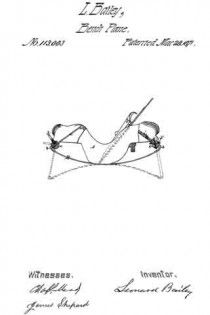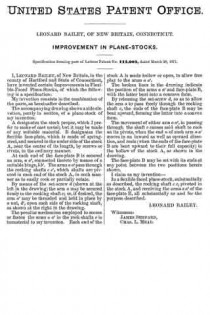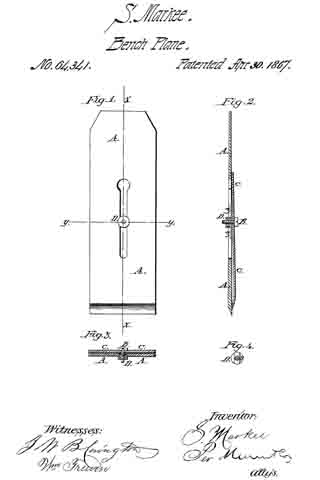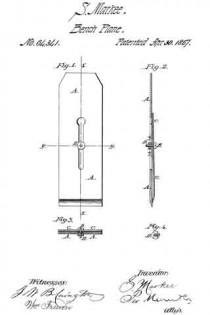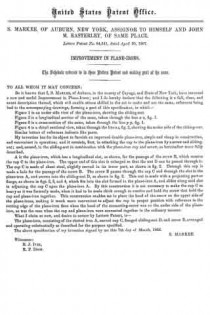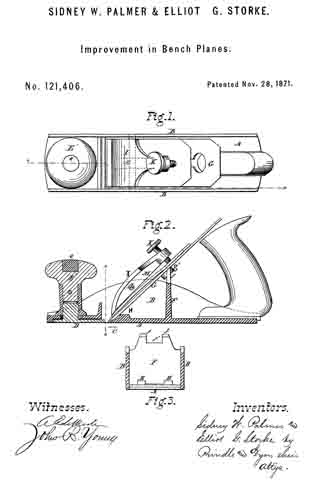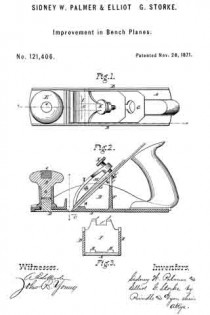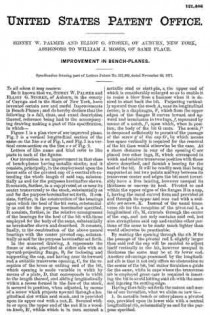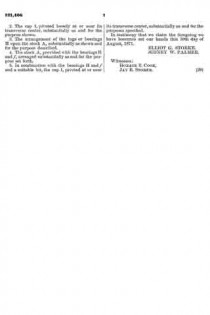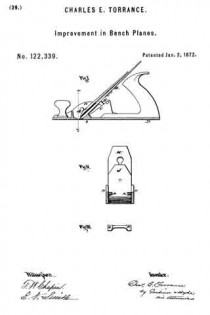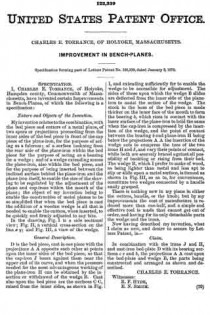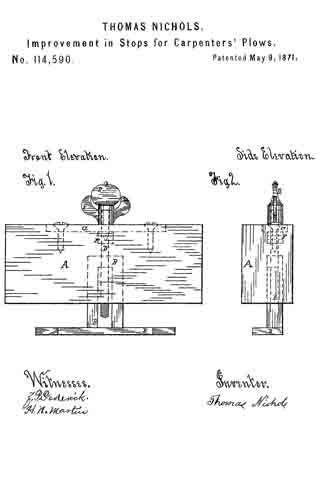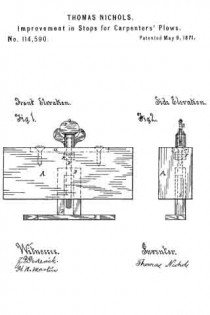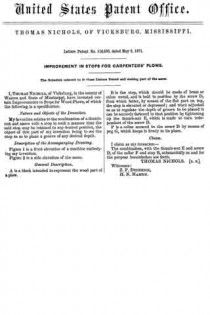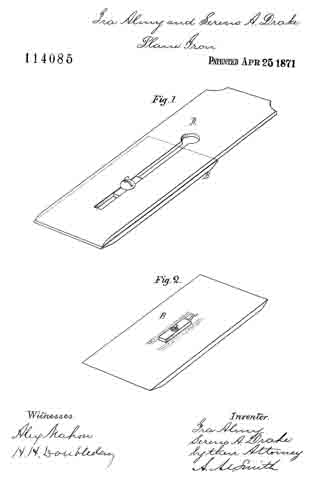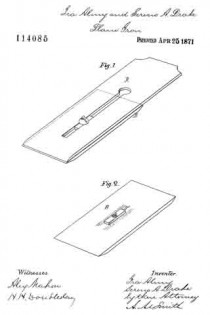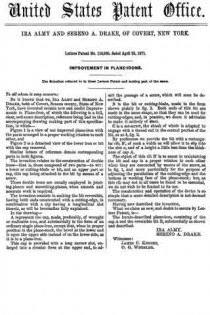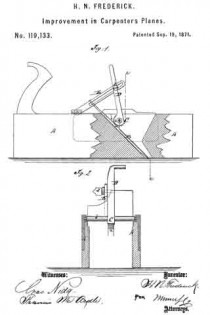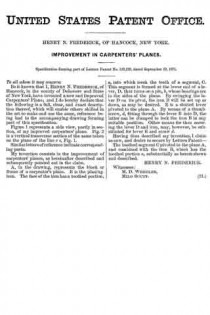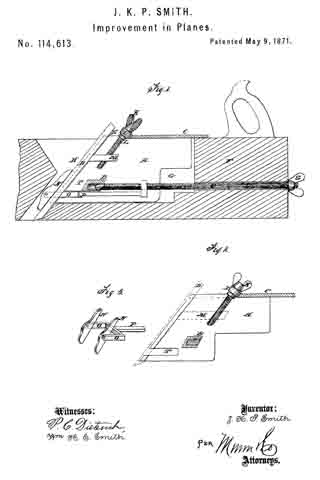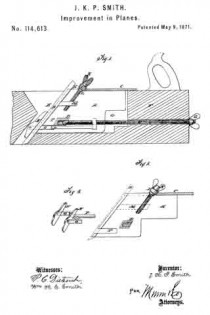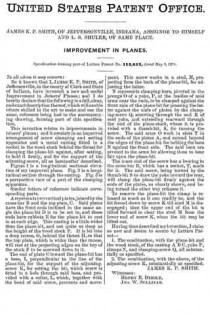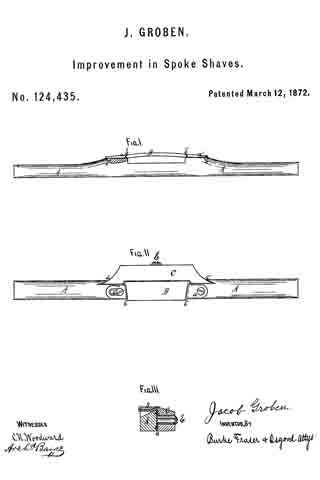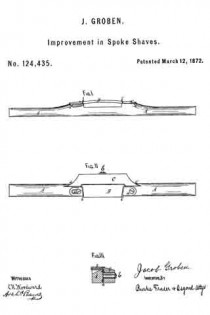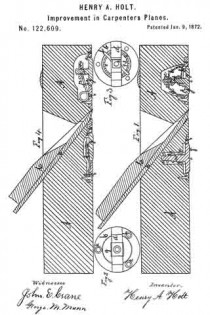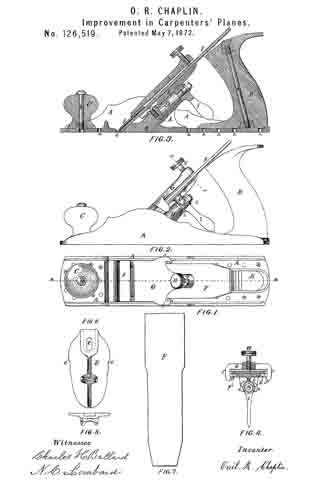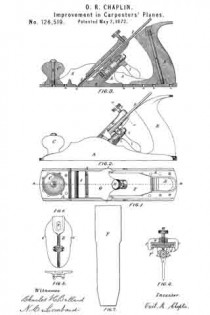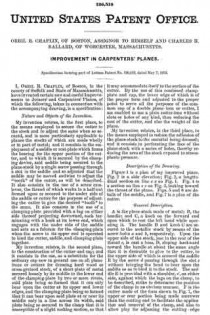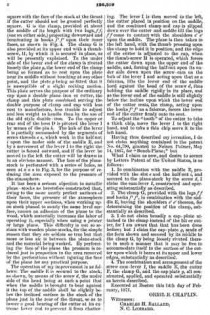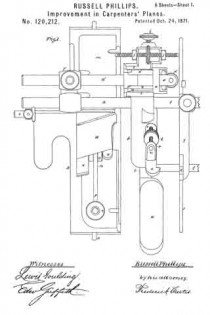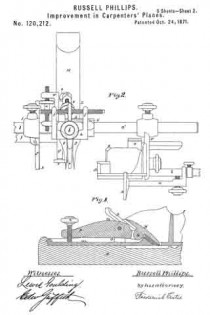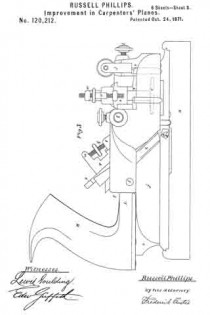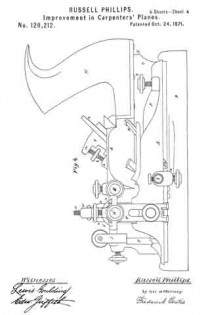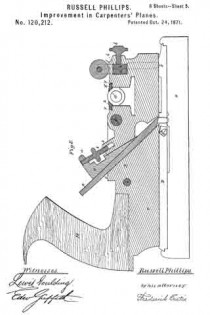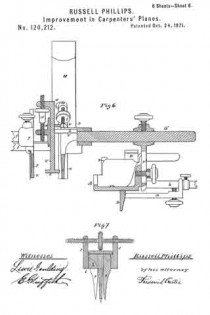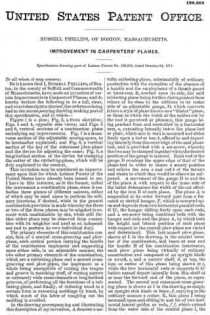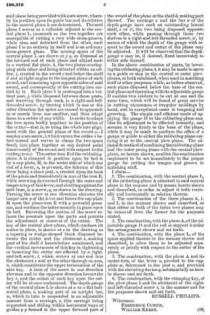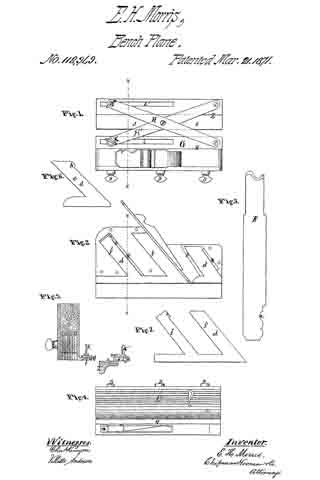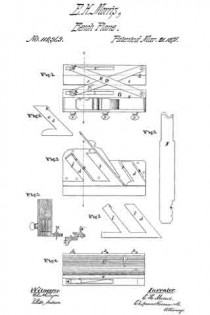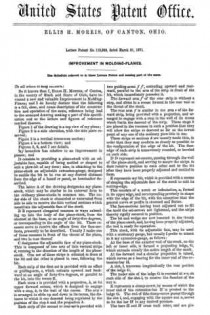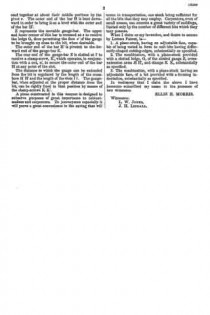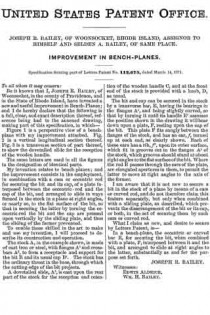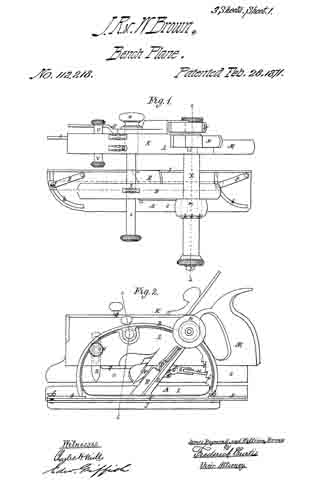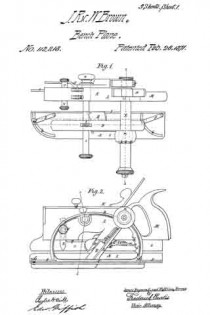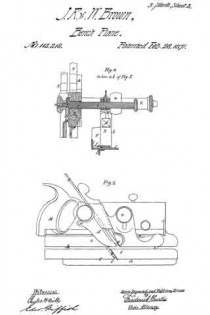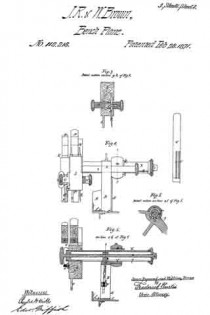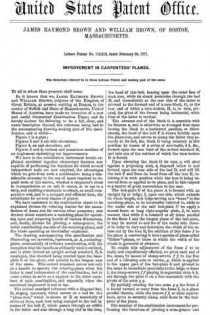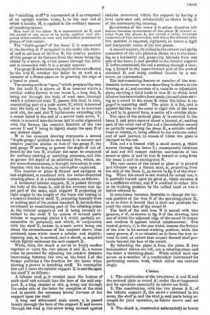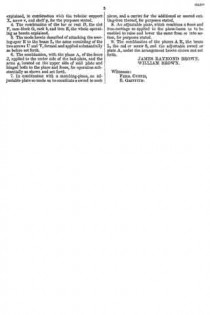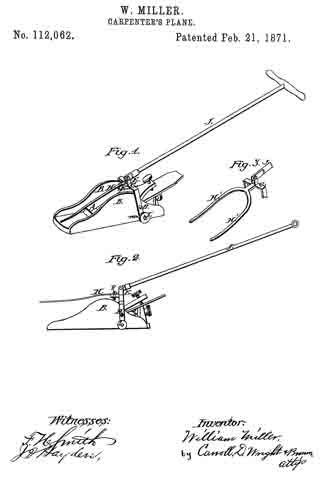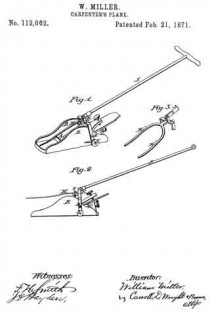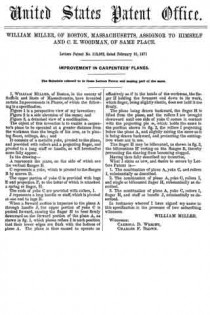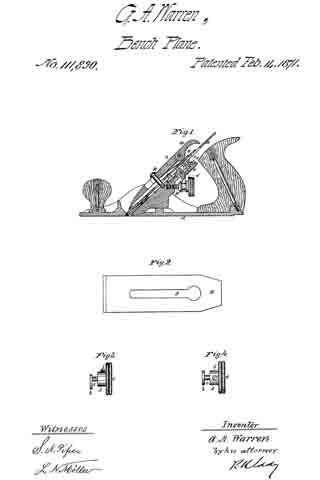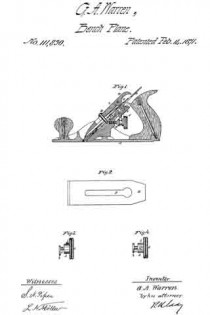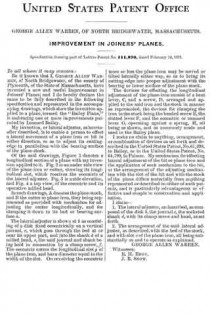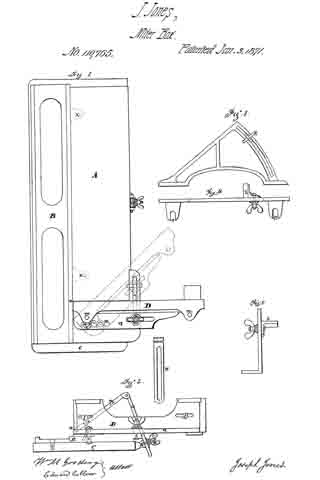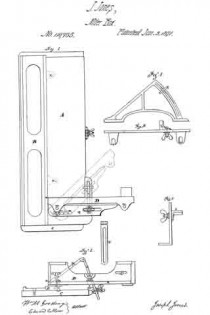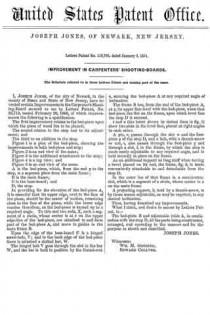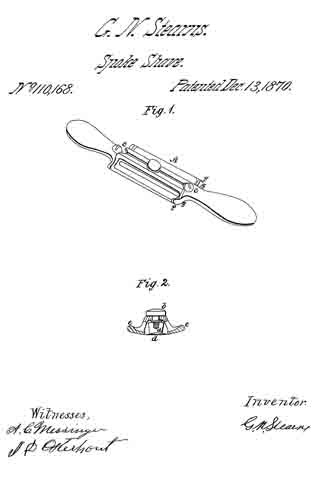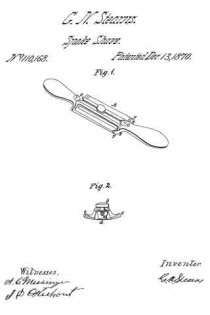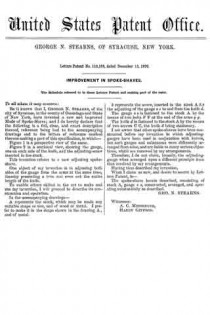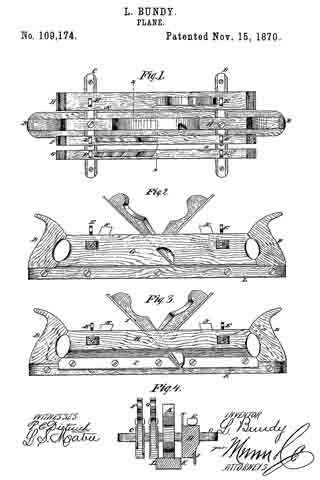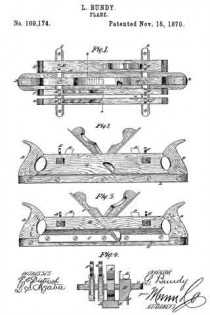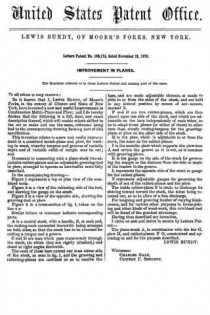No. 113,003 – Improvement In Plane-Stocks (Leonard Bailey) (1871)
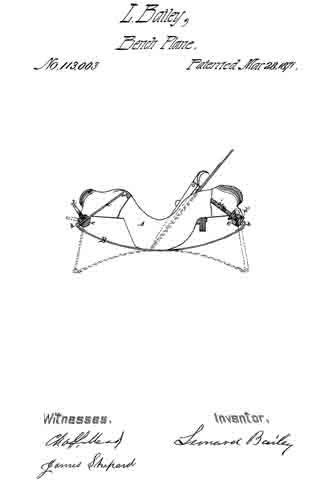
UNITED STATES PATENT OFFICE.
_________________
LEONARD BAILEY, OF NEW BRITAIN, CONNECTICUT.
IMPROVEMENT IN PLANE-STOCKS.
_________________
Specification forming part of Letters Patent No. 113,003, dated March 28, 1871.
_________________
I, LEONARD BAILEY, of New Britain, in the county of Hartford and State of Connecticut, have invented certain Improvements in Flexible-Faced Plane-Stocks, of which the following is a specification:
My invention consists in the combination of the parts, as hereinafter described.
The accompanying drawing shows a side elevation, partly in section, of a plane-stock of my invention.
A designates the stock proper, which I prefer to make of cast metal; but it may be made of any suitable material. B designates the flexible face-plate, which is made of spring-steel, and secured to the under side of the stock A, near the center of its length, by screws or rivets, in the ordinary manner.
At each end of the face-plate B is secured an arm, a a’, connected thereto by means of a suitable hinge, b b’. The arms a a’ pass through the rocking shafts c c’, which shafts are pivoted in each end of the stock A, in such manner as to easily rock or partially rotate.
By means of the set-screw d (shown at the left in the drawing) the arm a may be secured firmly in the rocking shaft c; or, if desired, the arm a’ may be threaded and held in place by a nut, d’, upon each side of the rocking shaft, as shown at the right in the drawing.
The peculiar mechanism employed to secure or fasten the arms a a’ in the rock-shafts c is immaterial to my invention. Each end of the stock A is made hollow or open, to allow free play to the arms af a a’.
The broken lines in the drawing indicate the position of the arms a a’ and faceplate B, with the latter bent into a concave form.
By releasing the set-screw d, so as to allow the arm a, to pass freely through the rocking shaft c, the ends of the face-plate B may be bent upward, forming the latter into a convex form.
The movement of either arm a a’, in passing through the shaft c causes said shaft to rock on its pivots, when the end n, of such arm a a’ moves in an inward as well as upward direction, and rests (when the ends of the face-plate B are bent upward to their full capacity) in the hollow of the stock A, as shown in the drawing.
The face-plate B may be set with its ends at any point between the two positions herein shown.
I claim as my invention —
In a flexible-faced plane-stock, substantially as described, the rocking shaft c c, pivoted in the stock A, and receiving the arms a, a’ of the face-plate B, all substantially as and for the purpose described.
LEONARD BAILEY.
Witnesses:
JAMES SHEPARD,
CHAS. L. MEAD.

